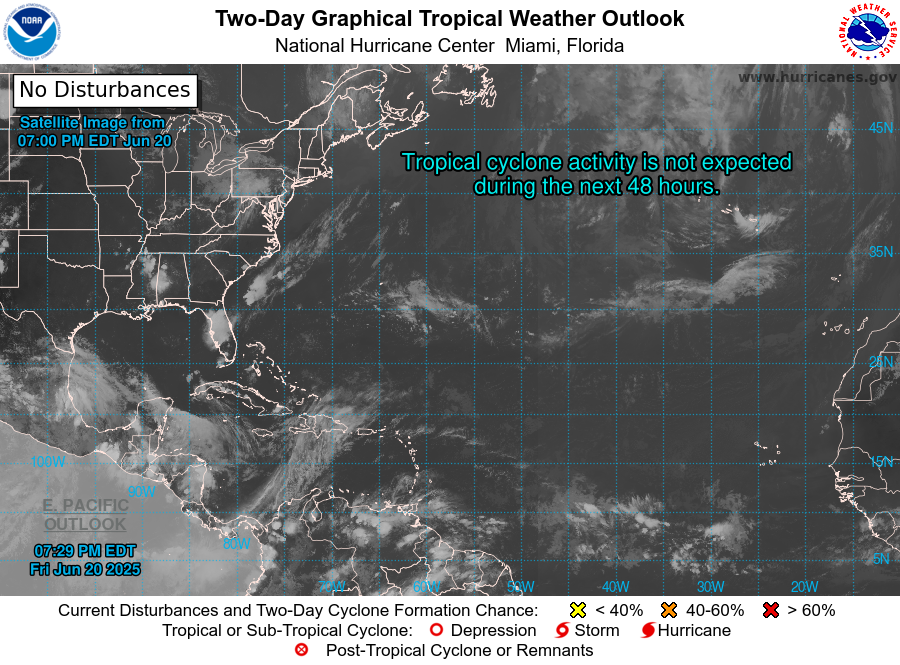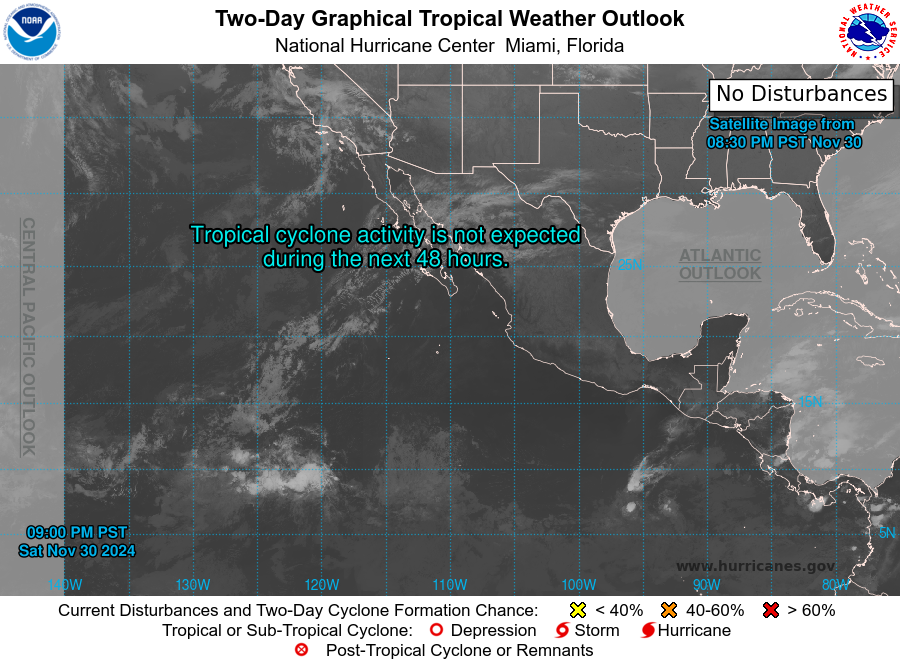Updated at 4:22 p.m. Sunday June 11, 2023
Here is what we are paying attention to in the next 48 to 72 hours. The article also includes weather maps for longer-term outlooks and a five-day World weather forecast.
We start with the U.S. Information.
Short Range Forecast Discussion
NWS Weather Prediction Center College Park MD
357 PM EDT Sun Jun 11 2023
Valid 00Z Mon Jun 12 2023 – 00Z Wed Jun 14 2023…Severe thunderstorms and an isolated threat of flash flooding will
exist across parts of the Lower Mississippi Valley and Tennessee Valley
through this evening……Locally heavy rainfall and a threat for flash flooding will exist over
the central High Plains through Monday……Unsettled weather with a threat for additional rounds of severe
weather, heavy rain and possible flash flooding is expected Monday and
Tuesday from the Red River Valley of the South through portions of the
Mid-South and Gulf Coast states……Triple digit and potentially record-breaking heat builds into much of
Texas over the next few days...

| Information Note: This article is now set up so that all the maps should automatically update. The links are provided but should not be needed. The downside is that if you go back to a previous version the maps will have been updated and not be relevant to the date of the prior article but will be current information. The NWS twice-a-day 48-hour forecasts do not auto-update in this article. I do it and I can be late doing it. The link for the NWS updates is HERE. Most of our other articles will not be set up to auto-update so that prior versions of the article will be meaningful.
Recently, we published the Weather Update for June. You can access it HERE. We also published the Weekly Crop Report. It can be accessed HERE The monthly International Agriculture Report can be accessed HERE. Remember the easiest way to get back to the article you were reading is to hit the return arrow in the upper left of your screen. There are other ways. |
First, the 48-Hour Forecast (It is a 48 to 72 Hour Forecast actually)
Daily weather maps. The Day 1 map updates twice a day and the Day 2 and 3 maps update only once a day. These maps update automatically. But if that does not happen, you can get updates by clicking HERE
TODAY (or late in the day the evening/overnight map will appear)
TOMORROW
NEXT DAY
This animation shows how things may play out over the next 60 hours. To update click here.
The NWS Climate Prediction Center’s: Watches, Warnings, and Advisories plus other information can be found HERE.
ATMOSPHERIC RIVERS
This tells us what is approaching the West Coast. Click HERE to update If I have not gotten around to doing the update. Here is some useful information about Atmospheric Rivers.
Continuation of the NWS Short Range Forecast. It is updated by NWS twice a day and these updates can be found here. We post at least one of those updates daily, sometimes both. The Highlights are shown in the lede paragraph of this article.
A strengthening low pressure system progressing from the Ohio Valley to
the Lower Great Lakes and Northeast by early this week combined with a
trailing front that will settle down across the South and stretch back to
the central High Plains will continue to focus unsettled weather with
numerous clusters of thunderstorms and locally heavy rain. Several
thunderstorms developing ahead of an associated cold front between the
Lower Mississippi Valley to the Tennessee Valley through this evening are
expected to turn severe, potentially producing damaging winds, large hail,
and a few tornadoes. The Storm Prediction Center has issued a broad
Enhanced Risk (level 3/5) of severe thunderstorms for the Mid-South and
Tennessee Valley. Additionally, locally heavy rain may accompany the
relatively fast-moving storms and create at least an isolated threat for
flash flooding concerns for these same areas and also up into portions of
the Ohio Valley. Much of the rainfall that does occur over these areas
should be beneficial given very dry antecedent conditions and ongoing
localized drought concerns. As the aforementioned low pressure system
pushes into the Lower Great Lakes and Northeast on Monday, a warm front
will initially lift north across the region followed by a cold front, and
the combination of these should foster numerous areas of showers and
thunderstorms across the Mid-Atlantic through New York and much of New
England. These areas have also been very dry this spring, and the rains
are expected to be beneficial, however there may be some localized small
stream and urban flash flooding concerns where the heaviest rains set up.Farther west, a front will remains draped up across the eastern slopes of
the central Rockies and adjacent High Plains which coupled with upslope
flow and moisture transport into this region should favor scattered to
broken areas of showers and thunderstorms. Some of these storms may turn
severe and create a flash flood threat this evening and again on Monday.
The Storm Prediction Center does depict a Slight Risk (level 2/5) of
severe thunderstorms capable of producing damaging winds and large hail
through this evening for areas of the Colorado Front Range southeastward
into adjacent areas of the southern High Plains including the Oklahoma and
Texas Panhandle. Heavy rainfall associated with the slower moving storms
could create flash flooding over eastern Colorado where soils remain
saturated due to a wet spring. The Weather Prediction Center has a Slight
Risk (level 2/4) of excessive rainfall depicted for eastern Colorado
through tonight, with the threat stretching from southeast Wyoming through
eastern Colorado and into western Kansas on Monday.Heavy rainfall will also be a concern from the Red River Valley of the
South to the Mid-South and adjacent downstream areas of the Gulf Coast
states early this week as the previously mentioned frontal boundary
gradually lifts back north and ushers in moist air from the Gulf of
Mexico. Moisture and instability pooling along the front coupled with a
wave of low pressure traversing it should help focus an axis of heavy
showers and thunderstorms. Some additional concerns for some severe
weather are expected along with a threat for isolated to scattered
instances of flash flooding where the heavier rains set up.Elsewhere, an upper-level low churning over the Southwest and eventually
the Intermountain West early this week will offer daily chances for
scattered thunderstorms and locally heavy rain between the higher
elevations of California and the northern Rockies. Farther south across
southeast Arizona, central and southern New Mexico, and far west Texas,
there will be increasing southwest winds which coupled with very low
humidity will increase the threat for wildfires.Temperatures over the Lower 48 through Tuesday are expected to feature
building heat across the Lone Star State. Highs into the upper 90s and
triple digits for most of Texas are forecast over the next several days,
with heat indices nearing 110 degrees across southern sections of the
state. Daily high temperature records could be approached or broken by
Tuesday. Residents are advised to take this early summer heat seriously
and follow proper heat safety. Hot temperatures are also expected to be a
concern across the Pacific Northwest on Monday and Tuesday with highs in
the low 90s which will be as much as 20 degrees above average. Meanwhile,
sustained below average temperatures are forecast beneath upper-level lows
over the Southwest and Great Lakes, with cooler weather also expected over
Learn about wave patterns HERE.
Below is the current five-day cumulative forecast of precipitation (Updates can be found HERE)
Now we look at Intermediate-Term “Outlook” maps for three time periods. Days 6 – 10, Days 8 – 14, and Weeks 3 and 4. An outlook differs from a forecast based on how NOAA uses these terms in that an “outlook” presents information as deviation from normal and the likelihood of these deviations.
Below are the links to obtain updates and additional information. They are particularly useful if you happen to be reading this article significantly later than when it was published. I always try to provide readers with the source of the information in my articles.
| Days 6 – 10 (shown in Row 1) | Days 8 – 14 (Shown in Row 2) | Weeks 3 and 4 (Shown in Row 3 but updates only on Fridays) |
| https://www.cpc.ncep.noaa. gov/products/predictions/610day/ | https://www.cpc.ncep .noaa.gov/products/predictions/814day/ | https://www.cpc.ncep.noaa.gov/products/predictions/WK34/ |
Showing the actual maps. They should now update automatically. The Week 3 – 4 Outlook only updates on Fridays. So below is what I call the Intermediate-term outlook. On Fridays, it extends out 28 Days. That declines day by day so on Thursday it only looks out 22 days until the next day when the Week 3 – 4 Outlook is updated and this extends the outlook by one additional week.
| 6
– 10
|
|
|
| 8
– 14 |
|
|
| 3
– 4 |
|
|
HAZARDS OUTLOOKS
Click here for the latest complete Day 3 -7 Hazards forecast which updates only on weekdays. Once a week probably Monday or Tuesday I will update the images. I provided the link for readers to get daily updates on weekdays. Use your own judgment to decide if you need to update these images. I update almost all the images Friday Night for the weekend edition of this Weather Report. So normally readers do not need to update these images but if the weather is changing quickly you may want to.
Temperature month to date can be found at https://hprcc.unl.edu/products/maps/acis/MonthTDeptUS.png
Precipitation month to date can be found at https://hprcc.unl.edu/products/maps/acis /MonthPNormUS.png
World Forecast
Below are the Day 1 -3 and 4-6 forecasts for temperature and precipitation. Updates and much additional information can be obtained HERE
World Temperature Anomalies
World Accumulated Precipitation
This information is provided by the University of Maine. They draw upon many different sources. There is a lot of information available at the link provided. I have just provided two useful forecasts. There are probably over a hundred different forecasts available from this source.
Worldwide Tropical Forecast (This is a NOAA Product)
This graphic updates on Tuesdays) If it has not been updated, you can get the update by clicking here Readers will only have to do that if they are reading this article much later than the date of it being published.
–
Information on Tropical Storms can be found HERE. Western Pacific information can be found HERE.


–
| I hope you found this article interesting and useful. |
–